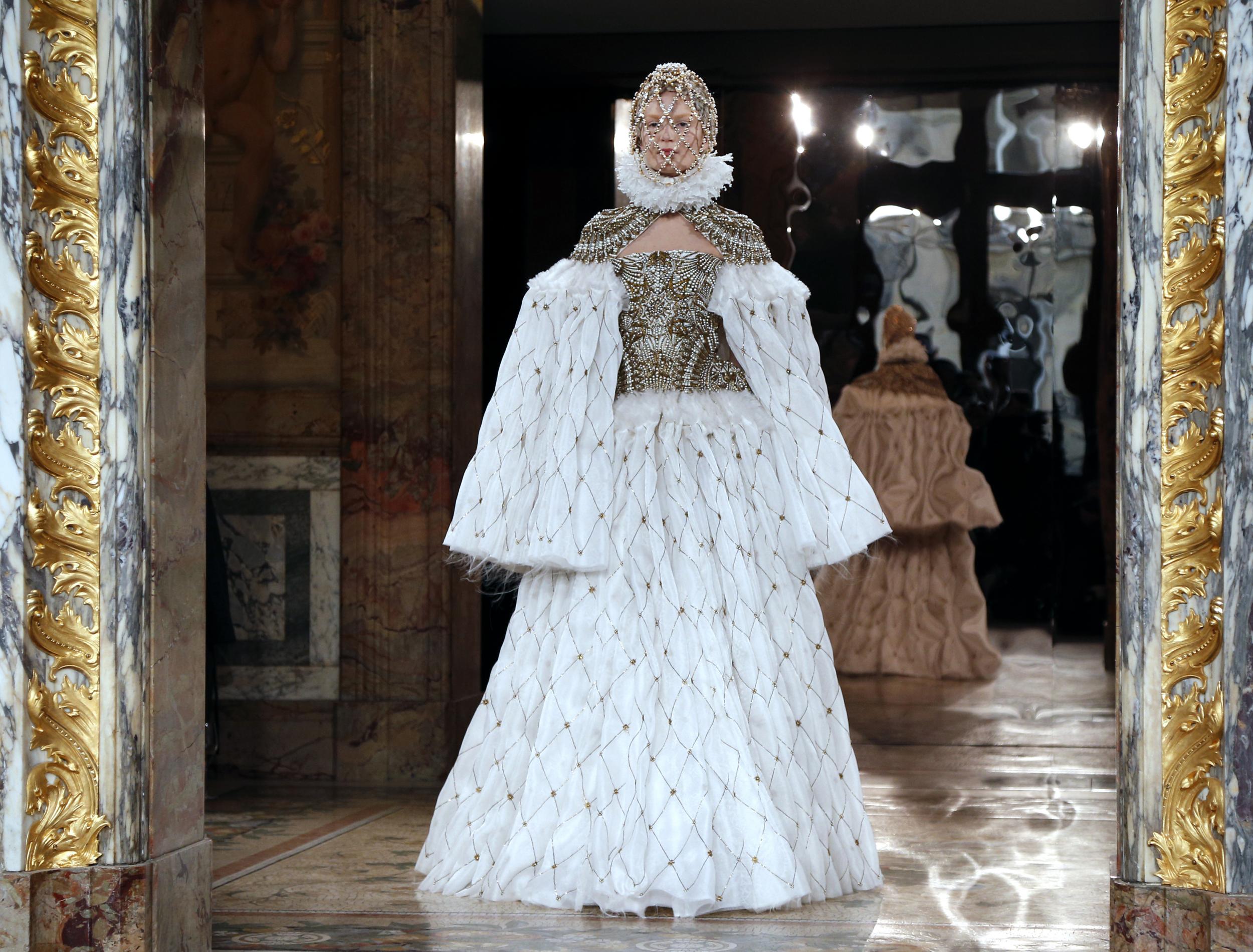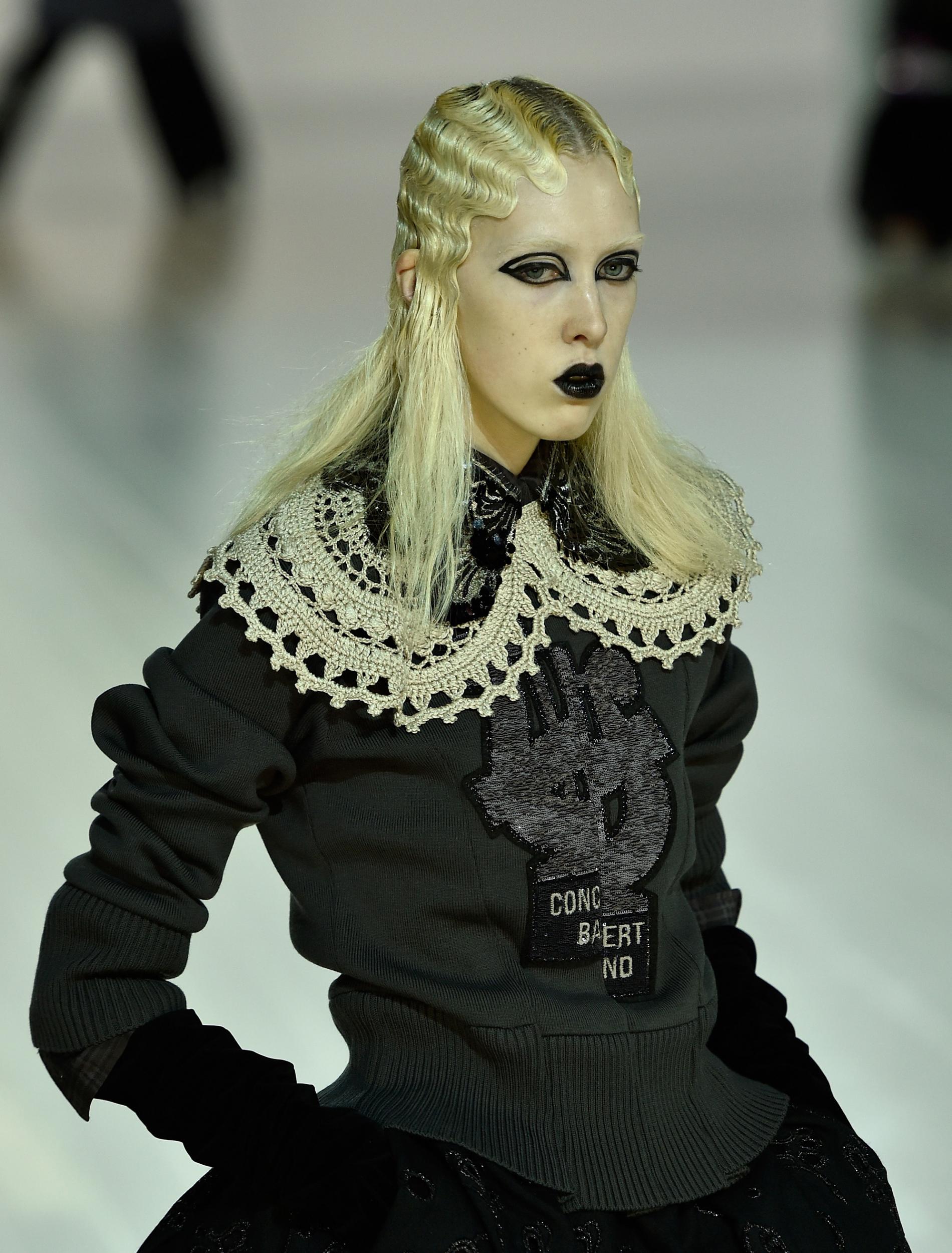A bit of ruff: the modern designers channeling Shakesperian flair
Over four centuries have passed since Shakespeare’s players donned doublet and hose, but a surprising number of modern designers continue to channel Elizabethan attire, says Rebecca Gonsalves

No matter how many modern incarnations of Romeo or Rosencrantz, Ophelia or Othello, when one thinks of Shakespeare the mental image summoned is highly likely to be that of players in Elizabethan garb – fully replete in ruff and jerkin; doublet and hose. It’s an enduring aesthetic on stage and screen certainly and, far from being relegated to theatrical performances, today it prevails in contemporary collections too. The Elizabethan influence has manifested on the catwalks of Christian Dior, Alexander McQueen, Gareth Pugh and Simone Rocha in the recent past. Vivienne Westwood is notorious for her sojourns into the history books – she titled one collection “Five Centuries Ago” and recreated Elizabethan textiles. While John Galliano devoted a Dior show to the Hans Holbein portrait of another Tudor, Henry VIII. It’s not just Brits delving into the history books – the wide-spread lace collar that topped a sweatshirt in the opening look of Marc Jacobs’s autumn/winter 2016 show, could have been the garb of the bard.

In part the lasting influence of the period is due to how important clothing was in sixteenth century society: “English fashion was very particular at that time,” says Jenny Tiramani, principal of the School of Historical Dress. She sees Shakespeare’s rise as part of a larger English cultural renaissance, one that has also coincided with important restrictions on clothing, the creation and manipulation of imagery and, of course, Elizabeth’s legendary rule.
“There was this incredible flowering of the English language,” says Tiramani. “Shakespeare is an exponent of that. But the same thing was also happening with the decorative arts in Europe. In England the drawn patterns of embroidery in Elizabethan dress; the weaving techniques of Italy and the incredible silks and velvets that were produced, these things were also in this wonderful flowering period. It’s an explosion of fashion that, to me, is a bit like the 1960s.”
Whether in the 1600s, the Sixties or even 2016, clothes inevitably tell a story. And while certain labels and looks still signify wealth and power, today there are far fewer rules to govern how we dress. “Clothes played such a different part of people’s lives [in Shakespeare’s time] than they do now,” explains Tiramani. “It was a very regimented society, it didn't have the freedom of choice we take for granted.”
One way of reinforcing and retaining that strict hierarchy was through the introduction of rules and laws that dictated who was able to wear what. The most famous of these is the 1577 “Proclamation Against Excess”, in which Elizabeth set out, in fine detail, what colours, fabrics and materials could be worn and by whom – the law even detailed on what part of the body. The colour purple, for instance, long associated with royalty, could only be worn by the King or Queen and their immediate family. Transgressions were punished with a fine. As such, there was a keen sense of visual literacy among all members of society.
This translated to stage costumes as well. The theatres of the time were a source of popular entertainment for the masses; Elizabeth and her successor James I would have seen the works of Shakespeare and his contemporaries performed at court. On stage at The Globe a character’s nobility – or lack thereof – would have been immediately obvious to the assembled audience thanks to the costume in which they were dressed. In fact, as Shakespeare and his company had direct access to the upper classes through their courtly duties, their stage performances were in part responsible for disseminating the latest fashions to the citizens of London, and beyond. At this time London theatres were often closed to stop the spread of plague and thus tours were not infrequent.
The level of prescription afforded by royal decree is difficult to relate to today – if the queen or the Government were to issue a decree on clothing standards there would surely be an uprising. But the dissemination of influence from the highest echelons of fashion is certainly more recognisable. Gareth Pugh is a designer with a long-standing fascination with historical dress, especially of the Tudor and Stuart periods, which was in part inspired by a visit to the Tower of London as a child. He has incorporated elements of Elizabethan dress into his collections – most notably with his use of ruffs and farthingale-like skirts in his spring/summer 2009 collection.
“The idea was to do something that was quite stately,” he said in 2013. “We had this very stately ruff which makes the models walk in a very particular way – very upright and poised.” Pugh, like most designers was inspired by the rich history of that era but was less keen to faithfully recreate the past than to reinterpret its symbols. “It comes down to a silhouette of power,” says Pugh, who believes that the Tudors were the first power dressers – “that idea of using clothes for more purpose than just clothing itself.” Elizabeth I carefully controlled her image as a way of wielding power, especially once she had ascended the throne when she was depicted in costumes that were rich, opulent and lavish. And as monarch she influenced Shakespearian productions in many ways: even her notorious ethereal qualities and painted white face were imitated by the young males who played female characters – although often to dangerous effect, thanks to the lead-based face paints of the time.
More recently, Syrian-born designer Nabil Nayal has won approval for his designs that marry Elizabethan aesthetics and construction techniques with hyper-modern technological advances; such as 3D printing and bonded pleating. For his autumn/winter 2016 collection, Nayal reworked the ruff with a modern sportswear influence to create a dramatic, and attractive proposition in an attempt to discover how “Elizabeth I would wear the ruff today.”
It’s no surprise that the ruff is one of the most enduring symbols of the Elizabethan era, their complicated construction made them solely for the wealthy, while the sumptuary laws placed restrictions on size related to the wearer’s social stature. “The ruff is one of the items that has kept its appeal,” says Tiramani. “Because it’s so extraordinary in terms of framing the face – there’s been nothing like it throughout history.” Who would’ve thought we’d feel the same five centuries later?” Bar Vivienne Westwood, of course.
Join our commenting forum
Join thought-provoking conversations, follow other Independent readers and see their replies
Comments